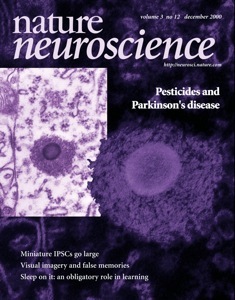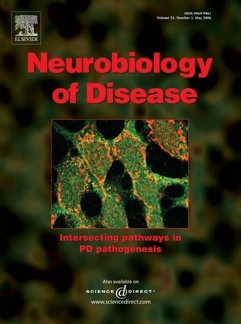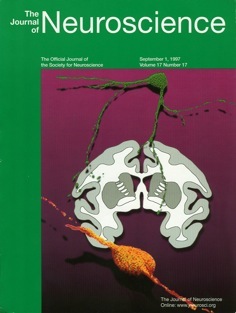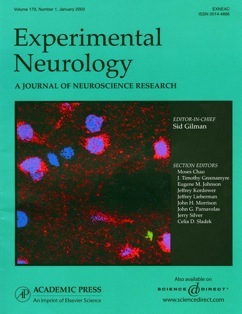
 J. Timothy Greenamyre, M.D., Ph.D.
J. Timothy Greenamyre, M.D., Ph.D.
Professor of Neurology, University of Pittsburgh Medical Center
Chief, Division of Movement Disorders
Director, Pittsburgh Institute for Neurodegenerative Diseases
Tim Greenamyre received his BS from Michigan State University and his MD and PhD from the University of Michigan. After his Neurology residency at the University of Michigan, he joined the faculty of the University of Rochester in 1990, and was recruited to Emory University in 1995. He moved to the University of Pittsburgh in 2005. He is Chair of the Scientific Advisory Committee of the Parkinson Study Group, a member of the Executive Committee of the Michael J. Fox Foundation, and a member of the scientific advisory committees of the Cure Parkinson’s Project and the Parkinson’s Disease Foundation. He is Editor of Neurobiology of Disease and an Associate Editor of The Journal of Neuroscience. He has extensive grant review experience, including as a member and a chair of NIH study sections. He has received a number of honors, including the Ottorini Rossi Award from the University of Pavia (Italy), a Decade of the Brain Lectureship from the American Academy of Neurology, a Presidential Lecture at the Annual Meeting of the Society for Neuroscience, a Grass Traveling Lectureship from the Society for Neuroscience and the Team Hope Award for Medical Leadership from the Huntington’s Disease Society of America.
His lab is interested in mechanisms that cause nerve cell death in disorders such as Parkinson's, Huntington's and Alzheimer's diseases. With respect to Parkinson’s disease, he is interested in interactions between environmental toxins (natural or man-made) and genes that increase or decrease an individual’s susceptibility to developing the disease. The work focuses on mitochondrial impairment, oxidative damage and protein aggregation. The general strategy is to define mechanisms that cause nerve cell death, and then use them as potential ''targets'' for therapeutic intervention. The lab employs in vivo models of neurodegeneration and in vitro culture of cells and brain slices to study mechanisms of degeneration with a variety of biochemical, anatomical and physiological techniques.
Recent publications:
- Betarbet, R, Sherer, TB, MacKenzie, G, Garcia-Osuna, M, Panov, AV and Greenamyre, JT, Chronic systemic pesticide exposure reproduces features of Parkinson’s disease, Nature Neuroscience 3:1301-1306, 2000.
- AV Panov, C-A Gutekunst, BR Leavitt, MR Hayden, JR Burke, WJ Strittmatter, JT Greenamyre, Early mitochondrial calcium defects in Huntington’s disease are a direct effect of polyglutamines, Nature Neuroscience 5:731-736, 2002.
- Sherer TB, Betarbet R, Testa CM, Seo BB, Richardson JR, Kim J-H, Miller GW, Yagi T, Matsuno-Yagi A, and Greenamyre JT, Mechanism of toxicity in rotenone models of Parkinson’s disease, J Neurosci 23:10756-10764, 2003.
- Papa S, Auberson YP and Greenamyre JT, Prolongation of levodopa responses by glycineB antagonists in parkinsonian primates, Ann Neurol 56:723-727, 2004.
- Greenamyre JT and Hastings TG, Parkinson’s – Divergent causes, convergent mechanisms. Science 304:1120-1122, 2004.
- Greene JG, Dingledine R and Greenamyre JT, Gene expression profiling of rat midbrain dopamine neurons: implications for selective vulnerability in parkinsonism, Neurobiol Dis, 18:19-31, 2005.
- Panov AV, Dikalov S, Shalbuyeva N, Taylor G, Sherer T and Greenamyre JT, Rotenone model of Parkinson’s disease: Multiple brain mitochondria dysfunctions after short-term systemic rotenone intoxication, J. Biol Chem 280:42026-42035, 2005.
- Betarbet R, Canet-Aviles RM, Sherer TB, Mastroberardino P-G, McLendon C, Kim J-H, Lund S, Na H-M, Taylor G, Bence NF, Kopito R, Seo BB, Yagi T, Yagi A, Klinefelter G, Cookson MR, Greenamyre JT, Intersecting pathways to neurodegeneration in Parkinson's disease: effects of the pesticide rotenone on DJ-1 and α-synuclein and the ubiquitin-proteasome system, Neurobiol Dis. 22:404-420, 2006.
- Pallanck L and Greenamyre JT, PINK, parkin and the brain, Nature 441:1058. 2006.
- Richardson JR, Caudle WM, Guillot TS, Watson JL, Nakamaru-Ogiso E, Seo BB, Sherer TB, Greenamyre JT, Yagi T, Matsuno-Yagi A, and Miller GW, Obligatory role for complex I Inhibition in the dopaminergic neurotoxicity of 1-methyl-4-phenyl-1,2,3,6-tetrahydropyridine (MPTP). Toxicol Sci 95:196-204, 2006.
- Sherer TB, Richardson JR, Testa CM, Seo BB, Panov AV, Yagi T, Matsuno-Yagi A, Miller GW and Greenamyre JT, Mechanism of toxicity of pesticides acting at complex I: Relevance to environmental etiologies of Parkinson’s disease, J Neurochem 100:1469-1479, 2007.
- Marella M, Seo BB, Nakamaru-Ogiso E, Greenamyre JT, Matsuno-Yagi A and Yagi T, Protection by the NDI1 gene against neurodegeneration in a rotenone rat model of parkinsonism, PLoS ONE 3:e1433, 2008.
- Mastroberardino PG, Hoffman EK, Horowitz MP, Betarbet R, Taylor G, Cheng D, Na H-M, Gutekunst C-A, Gearing M, Trojanowski JQ, Anderson M, Chu CT, Peng J and Greenamyre JT, A novel transferrin/TfR2-mediated mitochondrial iron transport system is disrupted in Parkinson’s disease, Neurobiol Dis, 34:417-31, 2009. PMCID: PMC2784936
- Cannon JR and Greenamyre JT, NeuN is not a reliable marker of dopamine neurons in rat substantia nigra, Neurosci Lett 464:14-17, 2009.
- Greenamyre JT, Cannon JR, Drolet RE, Mastroberardino P-G, Lessons from the rotenone model of Parkinson’s disease, Trends Pharmacol Sci 31:141-2, 2010. (PMCID: PMC2846992)
- Greene JG, Dingledine R and Greenamyre JT, Neuron-selective alterations in RNA transcripts related to energy metabolism in chemical models of parkinsonism in rodents, Neurobiol Dis, 38:476-81, 2010.
 The Greenamyre Lab:
The Greenamyre Lab:
Paul Barrett, PhD - Postdoctoral Associate
Roberto Di Maio - Research Associate
Eric Hoffman, PhD - Res. Asst. Professor
Maxx Horowitz - MD-PhD Student
Evan Howlett - Research Specialist
Xiaoping Hu - Research specialist
Jennifer McCoy - Lab Manager
Laurie Sanders (Andolina), PhD - Research Assistant Professor
Amanda Smith, PhD - Research Assistant Professor
Victor Tapias, PhD - Research Associate



